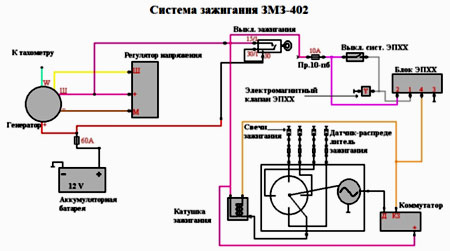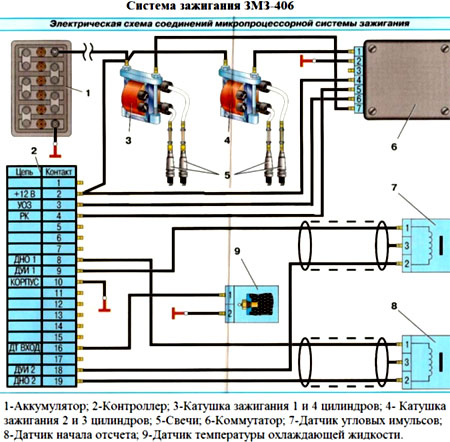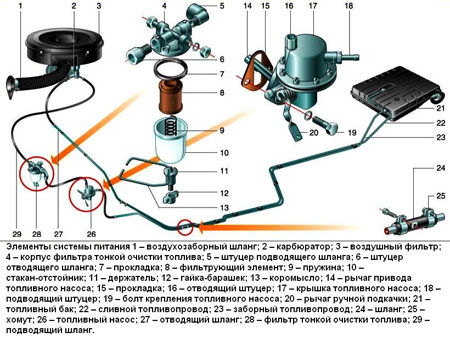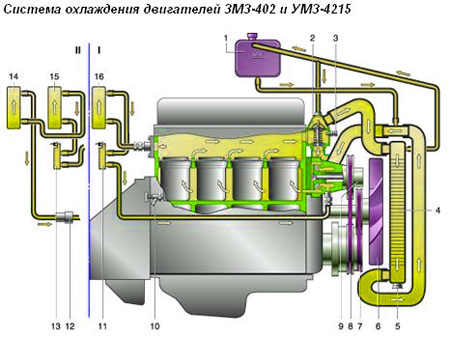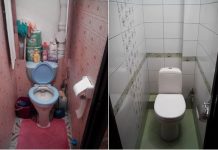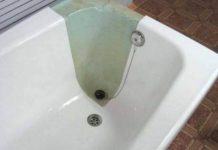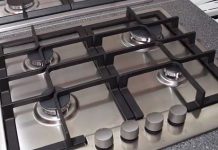The Gorky Automobile Plant produced the GAZ-3110 Volga sedan from 1996 to 2005. Production stopped long ago, but you can still find a lot of these cars on the roads of Russia; for their owners, the issues of operation, maintenance and repair of the GAZ-3110 "Volga" remain relevant. In the event of a malfunction, you can contact the workshop, but all the warranty periods for the car have long expired, any problems will have to be eliminated at your own expense. Therefore, many owners choose to carry out maintenance and repairs themselves.
During the trip, you should constantly monitor the condition of the car, monitor the readings of the devices. If you hear abnormal sounds, try to determine the cause and fix the problem. Do not allow the engine to run at maximum speeds for a long time, do not exceed the speed limit, especially on roads with poor coverage, this leads to rapid wear of the suspension. Try to anticipate the situation on the road, move smoothly, without sudden acceleration and braking.
If the maintenance time is exceeded, the units operate on contaminated liquids, their service life decreases. Avoid excessive wear of the brake pads, replace them if signs of wear appear (squeak when braking). A complete list and terms of routine maintenance are given in the instructions for the car.
If any malfunction occurs, it is necessary to determine what exactly failed. Sometimes this is immediately clear (for example, a flat tire), but often the source of the problem is not easy to find.
Very often the problems are associated with him. On the GAZ-3110 "Volga" they installed ZMZ-402 (carburetor), later ZMZ-406 (injection), cars with a diesel engine were also produced, but in very small quantities, no more than 150 units per year.
Various malfunctions of other units and assemblies are possible. Transmission and suspension repairs usually boil down to replacing defective parts. There are only two problems in the electrical circuits of gas 3110: there is no contact where it is needed, or there is where it is not needed. A joke, of course, but there is some truth in it. Repair consists in cleaning the contacts and replacing faulty devices, for example, light bulbs.
In the first place among the malfunctions is the oxidation of contacts in the system. The consequence of this is a break in the network and engine failure.
To check the ignition system, disconnect one of the high voltage wires from the spark plug and bring it to ground (any place on the block or body, stripped of paint) at a distance of 6–8 mm.
It is dangerous to hold the wire with your hands, reinforce it with available dry materials (preferably wooden). When cranking the engine with the starter, a spark should slip through. If not, troubleshoot the low or high voltage circuits. It is better to do this with the help of special devices (voltmeter, ohmmeter, special stroboscope). If they are absent, the low voltage circuit can be checked with an automotive light. Connect one of its contacts with a wiring to ground, the other - to the point of the circuit being checked.
If the light comes on, there is voltage. Do not forget that the electrical circuit after ignition is checked with the ignition on. Start on the battery and work your way down the low voltage circuit in sequence. If you find a point where there is no voltage, strip the ends of the wires and the connection surfaces. If this does not help, the matter is in the wire or device installed in front of this point.
In the high voltage circuit, clean any dirt and wipe dry all wires.Make sure that their ends are in close contact with the sockets of the coil, distributor (for 402 engine) and spark plugs. If a breakdown to ground occurs somewhere, the ignition will not work normally. Sometimes such a malfunction is easier to identify in the dark (sparking is visible at the breakdown site). On the GAZ-3310 "Volga" with a 402 engine, additionally remove the central wire from the distributor cover and check it for a spark (similar to a spark plug).
There is no spark - the ignition coil is faulty, it cannot be repaired, it will have to be replaced. If there is a spark after the coil, but there is no spark on the spark plugs, remove the distributor cover, clean it from dirt, check the condition of the central electrode ("coal"), runner and contacts.
Another characteristic malfunction is poor contact with the "ground" of the wire coming from the battery. Symptoms of this problem are dim headlights after stopping the engine and the inability to start it (you can hear the click of the starter, but the crankshaft does not rotate). Disconnect the wire from the ground and strip the contact surfaces.
If you suspect a malfunction due to lack or poor fuel supply, make sure that there is gas in the tank. Some drivers notice such an elementary thing only after long attempts to find a fault in other places.
Sometimes this is due to a failure or poor performance of the fuel level sensor. If there is enough gasoline, make sure that it is supplied to the carburetor (for 402) or to the injectors (for 406 engine). A vapor lock can form in the gas lines (in the hot season), blocking the access of fuel. If this happens, put a wet rag on the fuel line to cool down, or just wait, the engine will cool down and the plug will disappear. In cold weather, water trapped in the fuel can freeze, the ice plug also does not allow gasoline to pass through.
On the 406 engine, check if you can hear the hum of the fuel pump when the ignition is turned on. If not, its fuse may have blown. Before replacing, try to find the cause, the location of the short circuit can be determined by the smoked wires.
When the starter is turned on, gasoline should be poured from the hose. If it doesn't, the diaphragm may be damaged or pump valves are stuck. Check for leaks of gasoline in the pipe connections. If air enters the system, the pump pumps it instead of fuel.
In the cooling system, the result of a malfunction is overheating. Main reasons:
The main problem for the bodywork is corrosion. The condition of the paintwork should be monitored and, if necessary, restored.
VIDEO The GAZ 3110 model is a middle-class passenger car in a 4-door sedan body, which was first presented by the Russian automobile company GAZ (Gorky Automobile Plant) in 1996.This model, in fact, was a modernized version of its predecessor called GAZ 31029.
External distinctive features were new fenders, roof shape, hood, aprons, radiator grill. Only the doors remained the same. At first, GAZ 3110 cars were equipped with narrow black bumpers, and since 2000 they have been replaced with new modern bumpers, which began to be painted in body color. They gave the car a more impressive look due to the additional volume. A distinctive feature was the trunk lid, which opened from the bumper itself in order to facilitate the loading of things into the luggage compartment. In 2001, cars began to be painted and primed according to a new system, which made it possible to increase the service life of the body. There was also a special version of the GAZ 3110 for taxi services, which had a special coloring, preparation for a taximeter and interior trim made of easy-washable materials.
For the GAZ 3110 car, five engine options were offered: gasoline ZMZ-402.10 with a volume of 2.5 liters and a capacity of 100 hp; ZMZ-4021.10 with a volume of 2.5 liters and a capacity of 90 hp; ZMZ-4062.10 with a volume of 2.3 liters and a capacity of 150 hp; as well as turbodiesel power units GAZ-560 (GAZ 3110-600) and GAZ-5601 (GAZ 3110-601). Themselves turbodiesels were produced under the license of the Steyr company. The 3110 was fitted with a 5-speed manual transmission. The braking system included front disc and rear drum brakes.
The front suspension of the GAZ 3110 car was independent on wishbones with coil springs and included telescopic shock absorbers. The rear suspension was dependent, leaf spring with shock absorbers.
In 2003, the GAZ 3110 sedan underwent both some external changes and updates in terms of technical equipment. The car received a new grille, headlights, but they were rectangular as before. The taillights received built-in round reflectors, the locks received a central locking, and the door handles became lifting. As for the technical part, the car received a front pivotless suspension.
In 2004, the GAZ 31105 model came out, which later replaced the GAZ 3110 car, whose production was finally completed in the first quarter of 2005, completely giving way to 31105.
The GAZ 3110 model is a middle-class passenger car in a 4-door sedan body, which was first presented by the Russian automobile company GAZ (Gorky Automobile Plant) in 1996. This model, in fact, was a modernized version of its predecessor called GAZ 31029.
External distinctive features were new fenders, roof shape, hood, aprons, radiator grill. Only the doors remained the same. At first, GAZ 3110 cars were equipped with narrow black bumpers, and since 2000 they have been replaced with new modern bumpers, which began to be painted in body color. They gave the car a more impressive look due to the additional volume. A distinctive feature was the trunk lid, which opened from the bumper itself in order to facilitate the loading of things into the luggage compartment. In 2001, cars began to be painted and primed according to a new system, which made it possible to increase the service life of the body. There was also a special version of the GAZ 3110 for taxi services, which had a special coloring, preparation for a taximeter and interior trim made of easy-washable materials.
For the GAZ 3110 car, five engine options were offered: gasoline ZMZ-402.10 with a volume of 2.5 liters and a capacity of 100 hp; ZMZ-4021.10 with a volume of 2.5 liters and a capacity of 90 hp; ZMZ-4062.10 with a volume of 2.3 liters and a capacity of 150 hp; as well as turbodiesel power units GAZ-560 (GAZ 3110-600) and GAZ-5601 (GAZ 3110-601). Themselves turbodiesels were produced under the license of the Steyr company. The 3110 was fitted with a 5-speed manual transmission.The braking system included front disc and rear drum brakes.
The front suspension of the GAZ 3110 car was independent on wishbones with coil springs and included telescopic shock absorbers. The rear suspension was dependent, leaf spring with shock absorbers.
In 2003, the GAZ 3110 sedan underwent both some external changes and updates in terms of technical equipment. The car received a new grille, headlights, but they were rectangular as before. The taillights received built-in round reflectors, the locks received a central locking, and the door handles became lifting. As for the technical part, the car received a front pivotless suspension.
In 2004, the GAZ 31105 model came out, which later replaced the GAZ 3110 car, whose production was finally completed in the first quarter of 2005, completely giving way to 31105.
1.0 Operation and maintenance
2.0 Engine
3.0 Transmission
4.0 Chassis
5.0 Steering
6.0 Braking system
7.0 Electrical equipment
8.0 Body
9.0 Applications
10.0 Vehicle Specifications
Gaz-3110 and -310221 are rear-wheel drive vehicles, predetermined for use on tracks with a modernized surface.
The power unit is located under the hood at the front of the vehicle.
Gaz-3110 - passenger car, with a sedan body; Gaz-310221 is a cargo-passenger, with a station wagon body (the seats of the middle and rear row in the folded state represent the cargo platform).
Engines - four-cylinder, in-line vertical, four-stroke, gasoline, with a volume of 2.3 and 2.445 liters and a power of 90 to 145 hp.
The placement of the engine in the engine compartment is longitudinal.
a - places where the vehicle identification number is marked;
GAZ 3110 is a real workhorse, and, despite its venerable age, there are still many such cars throughout the country. However, despite the many undoubted advantages, this car also has a number of serious shortcomings, which include a technically imperfect and prone to breakdowns heater.
"Volga" in terms of the device of the heater and the principles of its operation in general does not differ from other cars.
The diagram shows the main parts of the GAZ 3110 stove.
Among the main components, it is worth highlighting:
The interior is warmed up due to the operation of the engine.
Outside air passes through the radiator, heats up, and then enters the passenger compartment
The fact is that during operation, the motor literally heats up, and so that it does not fail, excess heat must be removed from it. For this, a coolant is intended - antifreeze or antifreeze - which circulates through special pipes. They are connected to the radiator - the central unit of the heater, a device that accumulates heat. In this way, the coolant transfers heat from the running engine to the radiator. In parallel with this, the fan provides air flow to the radiator. Subsequently, the heated air enters the passenger compartment through open dampers, which are regulated using rails and levers.
The Volga stove is controlled by a fairly simple panel located on the control panel. In older models, two levers were placed on the flap - a lever for focusing air flows and a lever for controlling a stove tap.
This is how the stove control unit looks like on the old "Volga" (modified by the owner)
Air currents could be directed either to the windshield and the passenger compartment, or to the windshield and front doors, or to the feet of the driver and front passenger. The control lever for the stove tap made it possible to regulate the amount of warm air entering the passenger compartment, up to the complete cessation of its supply.
After the upgrade (to the GAZ 31105 version), the Volga received an improved heater control unit.
The control unit for the GAZ 31105 stove has become more convenient due to three handles
Instead of two levers, there were three "twists" on it - the handle for focusing the air flows, the handle for controlling the speed of the stove fan and the handle for adjusting the temperature. It is worth noting that the stove from GAZ 31105 can successfully replace the "native" stove on the classic 3110.
If you remove the shield and look at it from the back side, you can see the microcircuit.
On the back of the block you can see a microcircuit
The stove is connected to all the rest of the "electrics" in the car according to the standard scheme.
This diagram shows how to properly connect the GAZ 3110 stove
A resistor is an important link in an electrical circuit. In the stove, the resistor is responsible for the rotation speed of the fan blades. The resistor is connected to the fan motor and distributes the incoming current so that the fan can operate at different speeds. When the resistor breaks, all electrical current flows directly to the fan, and the stove operates in a single mode - at maximum speed.
The resistor ensures the operation of the stove in different modes
One resistor is installed in GAZ 3110 stoves, but motorists often install a second one in order to achieve more efficient operation of the heater. The resistor is located on the stove body, slightly to the left of the fan motor; relative to the car interior - under the glove compartment shelf, to the right of the radio. To get to the resistor, you will have to remove the glove compartment, and possibly the upper half of the torpedo.
The reason for the failure of the Volga stove resistor is its overheating. The fact is that the cooling of the resistor occurs due to the flow of outside air, and if the cabin filters are not changed in time, this important part of the stove will fail.
Car enthusiasts note that the GAZ 3110 is a cold car. The fact is that the Volga has a large interior and a low-temperature engine, and, accordingly, a weak stove. In addition, due to its design features, the Volga heater does not provide glass blowing from the driver's side. Another unpleasant moment is the noise during the operation of the stove.
In this regard, the owners of GAZ 3110 cars in every possible way strive to improve it.
Experienced Volga drivers point out that one of the most effective ways to "bring to mind" the car's stove are:
replacement of the heater fan motor with a more powerful one. In this case, you can put a "Samarovsky" (VAZ 2108, VAZ 2109, VAZ 21099, VAZ 2113, VAZ 2114, VAZ 2115) resistor, and take the control panel lever from the "Moskvich";
replacing the stove tap with an electric valve from any foreign car;
installation of an electric pump at the outlet of the stove;
replacing the radiator with a double one (it is necessary to connect and cut to size two thin radiators from any foreign car).
In addition, you can change the "native engine" from the classic version of the GAZ 3110 to a more powerful one - from the new version of the GAZ 31105 model.
Of course, it is necessary to replace the stove or any of its individual parts in case of failure.
Among the most common malfunctions, the following should be indicated:
the heater fan does not turn on at all;
the fan does not work in any position of the switch;
weak stove power;
the stove fan makes a lot of noise.
Removing the GAZ 3110 stove is a long and time-consuming process, and, in addition, it involves removing the panel, which is why many motorists prefer not to mess with it. Fortunately, to replace the stove, it is not necessary to remove the panel completely - it is enough to move it slightly.
To remove the GAZ 3110 stove, the usual set of tools will be enough, which will certainly be found in the garage of every motorist. In particular, you will need:
two keys for "10";
key to "13";
slotted screwdriver.
To remove the GAZ 3110 stove, a simple set of tools is enough
A Phillips screwdriver, wire cutters, pliers, and a hammer can also come in handy. In addition, a rag and a container with a volume of at least 10 liters will come in handy.
The stove should be removed from the GAZ 3110 car in a bright, protected from moisture place, for example, in a garage or in a summer cottage under a canopy. And it is also worth noting that it is quite problematic to remove the stove from the Volga alone, so it is better to invite someone to help you.
The first thing to do when starting to dismantle the stove is to remove the negative terminal of the battery. This is how all the electronic components of the car are de-energized, which means that you will not be electrocuted during operation.
At the first stage, it will require a number of manipulations under the hood of the car.
The coolant must be drained. To do this, loosen the clamps on the pipes leading to the radiator. The liquid is drained into a previously prepared container.
Next, you need to remove the stove tap. For this, the fastening nuts are unscrewed and the crane is removed from the studs.
It is necessary to unscrew the nuts fastening to the mudguard and remove the faucet from the studs
The next stage of work is carried out from the side of the salon.
The torpedo moves back. To do this, they usually remove the ashtray and cigarette lighter, remove the steering column lining and unscrew the torpedo mount, which consists of two bolts and six self-tapping screws.
We unscrew the upper and lower fasteners, disconnect the wiring and take out the ashtray
We remove the heater distributor GAZ 3110
After these manipulations, you again need to move to the hood.
Loosen the clamps, disconnect the hoses from the radiator and remove the gaskets from the pipes.
Unscrew the nuts that secure the stove body to the body and the air intake. You need to act as carefully as possible, because at this stage of work it is especially easy to damage the radiator.
Finally, carefully lower the right edge of the cabinet and pull the stove towards you.
The final stage of work - we remove the heater
VIDEO
Thanks to the previously described manipulations, it is possible to replace the stove or defective parts, thereby providing comfortable conditions for the driver and passengers in the car for a long time.
The chassis is perhaps the second most important component of the car (after the engine). And chassis malfunctions create a lot of trouble for motorists. Naturally, malfunctions are a fixable thing, you just need to know exactly how fixable.
So, you have purchased a Volga (GAZ-3110). You drove home on it, boasted to family and friends. You have decided to whom and where you will make a debut visit for your four-wheeled partner. And a day later, they found chassis malfunctions of different complexity. What to do?
Let's say right away: there is no need to panic, even if the need to repair the car caught you for the first time. You can easily do without inviting an employee of the nearest service station. Because this article will provide you with some useful tips for prompt repairs.
Finding malfunctions and repairing the running GAZ 3110 is not so impracticable. The simplest thing to do is check the tire pressure and, if it is low, inflate the tires. Next, make sure that the joints on the steering shaft-countershaft-steering gear section are serviceable. If there are faults in this part, usually tighten the tie bolts or change the intermediate shaft.
Be sure to research the pendants. It may be necessary to tighten the nuts and bolts there as well. Maybe another suspension is already needed. And with it - a new flange and steering gear. At the same time, see if there is enough fluid in the power steering system, and tighten the drive belt.
It will not hurt to check the wheel balancing. If the result is negative, the wheel bearings (or even the wheels themselves) must be replaced.
Does the car go unevenly on the road, leading you to the side? As soon as you can, examine the spring, the brakes, the front toe angle, and the steering mechanism.
On the way, you find out that the steering wheel is tight. Most often, the matter is in a small amount of lubricant in the rods, hinges, and the entire mechanism. Lubricate them. Does the steering wheel return poorly to its original position? The point, again, is the lack of lubrication in the steering gear. Pivots or shaft may be seized. Lubricate them too.
Does the steering become unstable when braking? Here the matter is worse: it only means the need to replace the "guilty" part (wheel bearing, caliper, spring, discs). And even a considerable body repair shines.
By the way, about the body. It does not need to be overloaded. Otherwise, you will have a suspension draft, and then you will have to change the shock absorber strut.
A few more words about the suspension strut. Its malfunction (wear) affects the operation of many parts of the Volga. In addition to suspension settlement, it can cause body vibrations, too soft / too hard driving, warped tires, poor handling of the car in general.
We did not talk about all possible malfunctions. Alas, the format of the article allows only to summarize: the repair of the GAZ 3110 chassis (and any car too) is not so economical, although not so difficult. Remember this, and your iron vehicle will not forget to pay back with effective and long service.
Today, very often do-it-yourself repair work on the GAZ 3110 is carried out, especially since all the necessary information can be easily found.Of course, there are some specific work that can only be carried out in a car service, for example, repairing a generator.
There are certain oil and coolant change intervals that must be followed in order for your vehicle to function properly. So, repairing radiators in most cases entails changing the coolant.
So, every ten thousand kilometers you need to change the engine oil. The coolant is changed every two years or every sixty thousand kilometers. The gearbox oil is changed with the same frequency. For example, repairing the rear axle will require an oil change in the crankcase without fail. By the way, the level of this oil also needs to be checked every twenty thousand kilometers. As for the brake fluid, it should be replaced with a new one every two years, regardless of the car mileage.
As already mentioned, a number of repairs can be carried out in a “garage” environment. These include, say, the repair of the exhaust system and the repair of the power steering. As for the power steering, most of the problems associated with the incorrect operation of this unit are caused by a malfunction of the power steering belt.
The belt is a very important part despite its small size. Basically, this part is replaced every fifty thousand kilometers, although in this case, much depends on the conditions in which the machine is operated. When replacing the belt, it is very important to ensure the correct tension during installation afterwards. Also, you may not be guided by the recommended mileage, but periodically inspect the unit for defects.
By and large, this statement is true for all, without exception, automobile nodes. If something changes in the "behavior" of your car, you should immediately diagnose. For example, the repair of the front suspension, carried out immediately after the detection of the malfunction, will cost you less than if the first "bells" are ignored and the unit is completely out of order.
By the way, the repair of the suspension is very often carried out by the drivers on their own, since the assembly and disassembly of this unit is usually not difficult. Of course, if the diagnosis of a malfunction is difficult, then you should contact the professionals. As for work with the suspension, there is one important nuance: if some elements are very worn out, then they must be replaced with new ones. In this case, fixing or welding is not allowed.
The same applies to such manipulations as stove repair. Very often, the reason for the incorrect operation of this unit is a leaked radiator. It is also preferable to replace this part with a new one, and not engage in "invention".
Of course, not all repair work can be done independently. For example, the repair of a generator, as well as the repair of batteries, should be trusted by specialists, since in these cases professional tools, special devices, and test stands are needed.
To date, car repairs, including gearbox repairs, are successfully carried out at almost all service stations. If the driver is faced with the need to repair the GAZ 3110 with his own hands, then only if he wants to save money. In this case, correct troubleshooting is only possible with proper diagnostics.
For example, a gearbox repair may be necessary in the following cases:
noise in the gearbox,
difficult gear shifting,
oil leak.
GAZ-3110 is a Russian passenger car of the Volga family produced by the Gorky Automobile Plant. GAZ-3110 was produced in series from 1996 to 2005.
GAZ-3110 was a further modernization of the GAZ-31029 model with a complete replacement of all exterior body panels, including the roof panel, but excluding the doors and front fenders.In 1997, a limited "transitional" series was produced, complete with inner door skins, a front end of the body and wheels from the previous model. Initially, narrow bumpers made of black thermoplastic were installed on the car, since 2000 they have been replaced by bulky overhead fiberglass bumpers. The salon was completely renovated and, in general, began to meet the standards of inexpensive foreign cars in finishing.
On the GAZ-3110, a power steering was installed as standard, the steering gear was changed (3.5 turns of the steering wheel, instead of 4.5 as on previous Volga models), front disc brakes of the Lucas type, a continuous rear axle, a propeller shaft with an intermediate support, more low-profile 15-inch wheels 195/65, electro-corrector of headlights, oil cooler, quite rare on passenger cars, heated glass washer nozzles, dual-mode heating of the rear window. Since 2001, all Volgas have been painted at the new Hayden-2 painting complex. The new technology of priming and painting made it possible to use two-component metallic enamels and at the same time to increase the service life of the body. Since May 2003, the Volga has a front pivotless suspension.
Since 2004, the production of the GAZ-31105 sedan began, which is a deep restyling of the GAZ-3110, discontinued at the beginning of 2005. The production of the GAZ-310221 station wagon car continued in small batches on a separate conveyor line, in parallel with the GAZ-3102 model until December 2008. The station wagon version with "plumage" in the style of GAZ-31105 was produced to order.
Video (click to play).
The generally recognized drawback of the early GAZ-3110 Volga series was poor build quality and low body resistance to corrosion, subsequently improved, but the general obsolescence of the car design, especially in terms of active and passive safety, reduced the demand for Volga to a critical one. However, due to a number of popular consumer qualities (good endurance and capacity in combination with a reasonable price), the car has become quite common in Russia.

